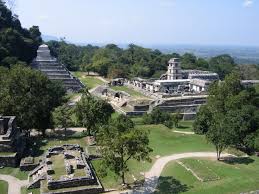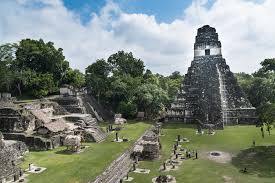More than 2,000 years ago, while Rome was laying waste to Carthage and the Hopewell people were building mounds in Ohio, a grand maya civilization flourished at a now little-known site in Guatemala called Cival.
Developements
Not all the cities were developed at the same time. At the beginnings of the Maya culture, the highlands raised the first edifices. In the apogee of the Classical Period, between 250 and 900 A.D., the lowlands witnessed the flourishing of great cities such as Tikal, located in the heart of the Guatemalan Petén. After that, the creative impulse moved to the plains and low plateaus of the south end of the Yucatán peninsula, where the Puuc cities saw their moment of glory.
Unlike the Aztec, the ancient Maya were not empire builders. Instead, they formed independent polities. Their common culture, calendar, mythology and spiritual view of the world united them as Maya. Many of the Mayan sites are located near the Yucatan Peninsula, spilling over to the lowland rainforests of Mexico to the east and Belize in the west, some of Guatemala and eastern part of Honduras The largest Maya cities were home to many people.

At the major centre of Tikal, for example, within a six-square-mile area, there were over 10,000 individual structures ranging from temple-pyramids to thatched-roof huts. Tikal's population is estimated at up to 60,000, giving it a population density several times greater than an average city in Europe or America at the same period in history.
Architecture
The Mayan cities, full of magnificent stone temples and pyramids, were primarily ceremonial centers. Most of the Maya lived in rural areas and were farmers who looked to the priests of the cities for direction on the best days to plant, harvest, and marry.
As Maya cities spread throughout the varied geography of Mesoamerica, site planning appears to have been minimal. Maya architecture tended to integrate a great degree of natural features, and their cities were built somewhat haphazardly as dictated by the topography of each independent location.

For instance, some cities on the flat limestone plains of the northern Yucatán grew into great sprawling municipalities, while others built in the hills of Usumacinta utilized the natural loft of the topography to raise their towers and temples to impressive heights. However, some semblance of order, as required in any large city, still prevailed.
Mayan Cities History
The cities were rarely laid out in neat grids, and appear to have developed in an unplanned fashion, with temples and palaces torn down and rebuilt over and over through the centuries. Because of this seemingly erratic pattern of settlement, the boundaries of Maya cities are often hard to determine.

Some cities were surrounded by a moat, and some had defensive earthworks around them; however, this was unusual. City walls are rare at Maya sites, with the exception of some recently discovered cities dating from the collapse of Maya civilization, when protective walls were suddenly thrown up around cities under siege from outside enemies.
Exhibits of Each Maya city
Each Maya city exhibits a unique style, although regions and epochs lent them certain common features. When we visit the ruins of the cities that seem to suddenly appear from the dense jungle, we cannot but admire the engineering workmanship which guaranteed the supply of provisions and water to the inhabitants;

The fine stucco decorations; the stone estelas, dumb witnesses to the most advanced calendar system of those days; the ample and complex network of roads that criss-crossed all the land, keeping communications, commerce and interchange open to all Maya centres.
More info on- Maya Civilization, Mayan cities, Capital
|






